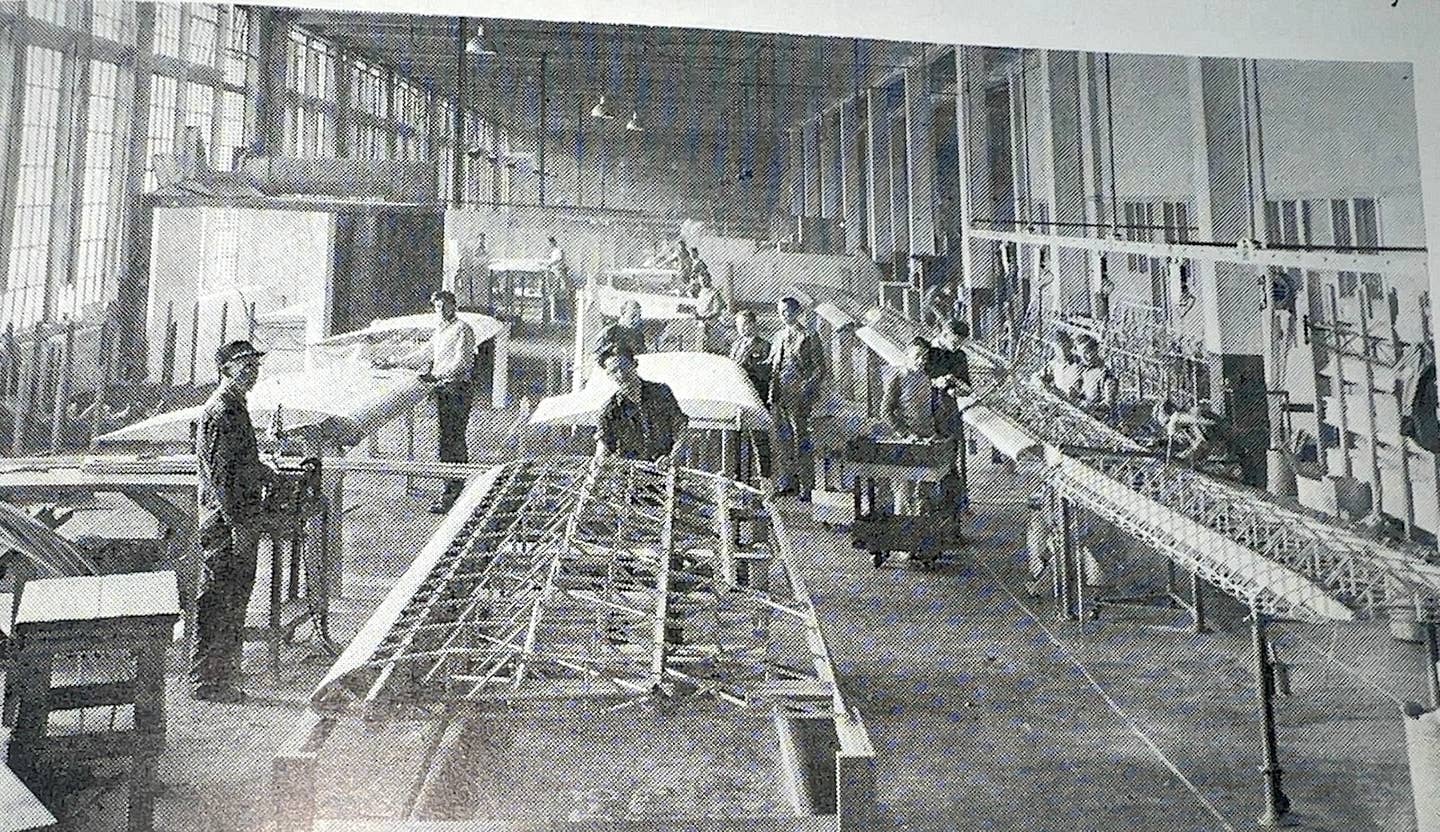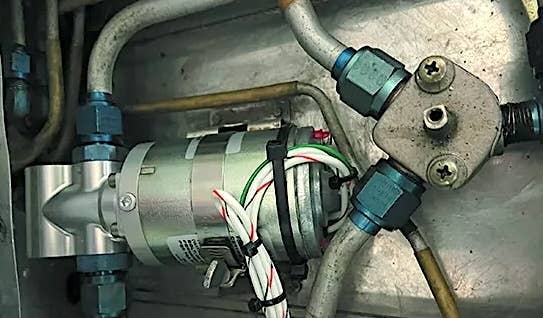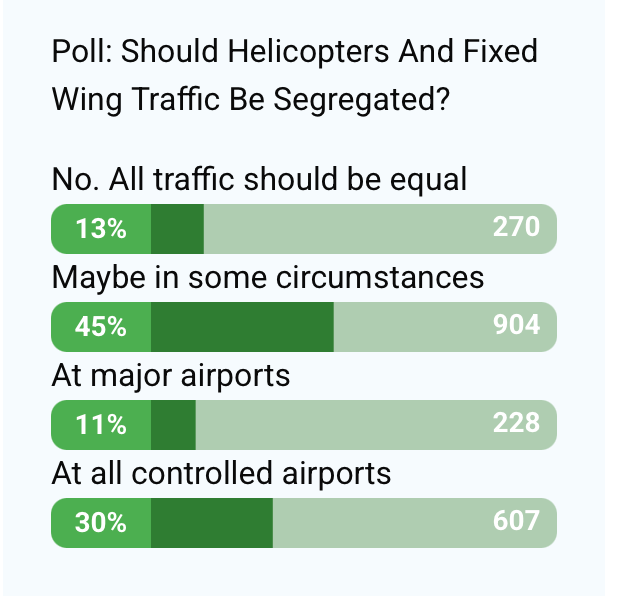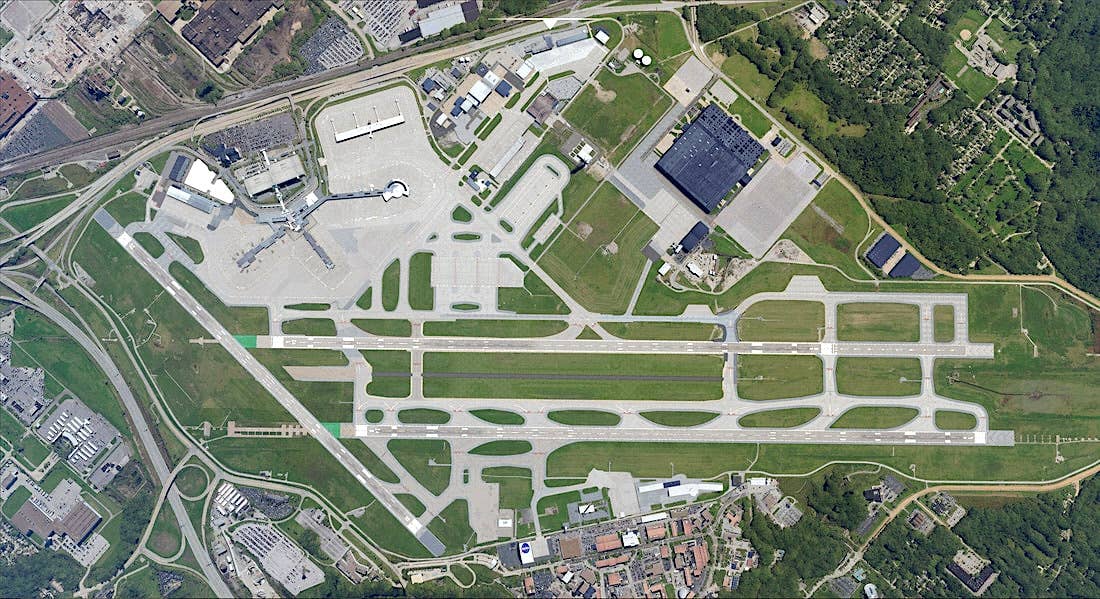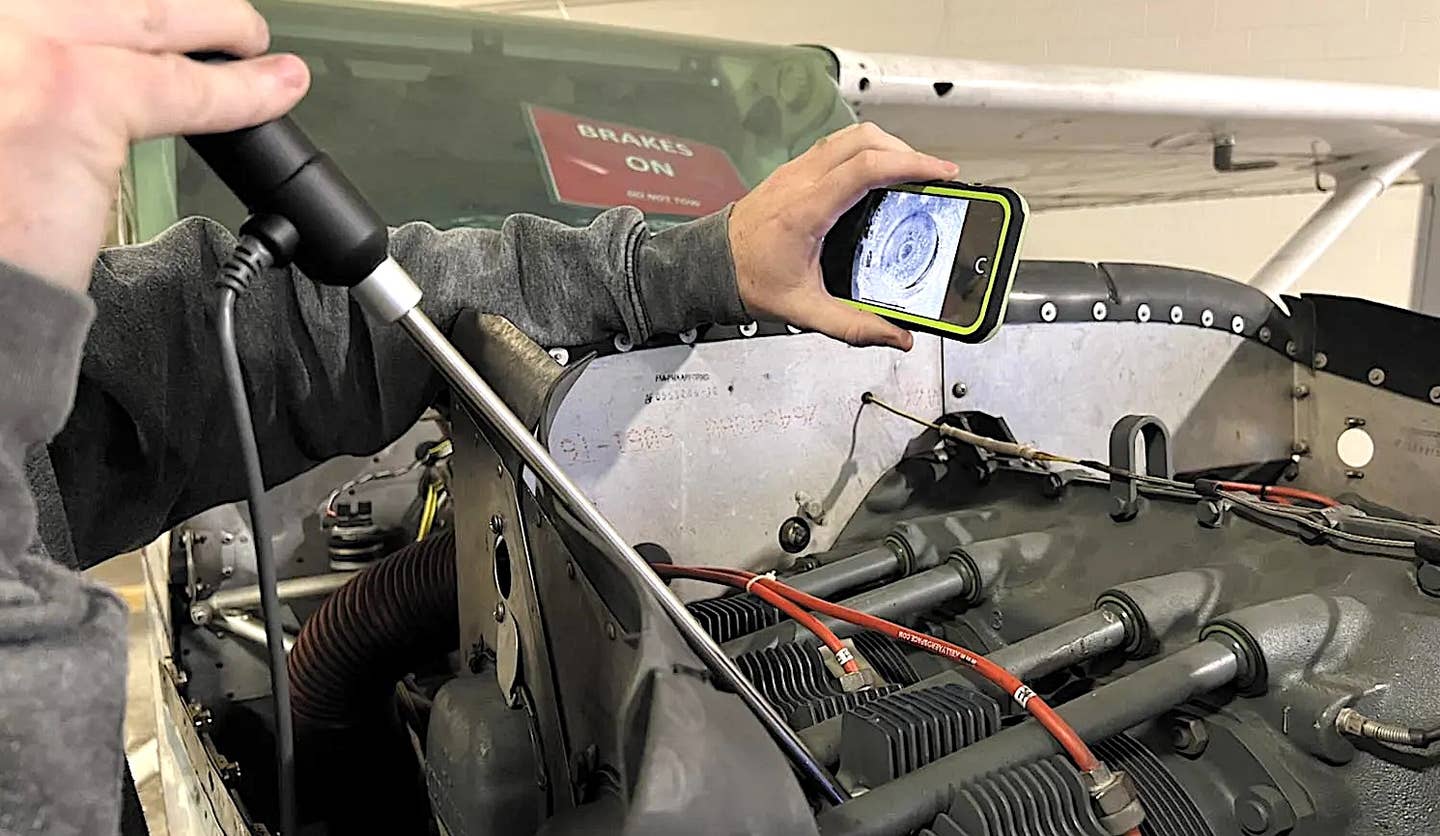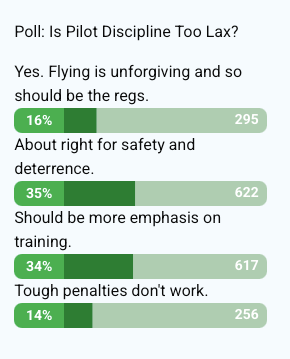The Pilot’s Lounge #23:Crashworthiness – Improving Your Chances When You Have to Put It Down
Crashing. It’s not something pilots like to think about, much less experience. But surviving an abrupt, unplanned end to a flight is something for which a well-prepared pilot should consider and equip. A lot of research has been done over the years and the fruits of that work have been incorporated into modern aircraft. Still, as AVweb’s Rick Durden explains, there’s much that a pilot and aircraft owner can do to help improve the chances that he and his passengers will emerge unscathed from an unplanned landing.

 Itwas a grubby day outside the Pilot's Lounge here at the virtual airport. The VFRstudents had been scrubbed but a few of the IFR students were out flying withtheir instructors getting some actual experience in the clag. Most of theregulars were inside, sitting in the big easy chairs because someone had dug upa portable television and we wanted to watch the Indianapolis 500. It wasdelayed by rain, so we were doing what pilots do so very well - talking. Duringthe delay we watched a short piece on crashes at Indy and the design of the carsto protect the drivers on impact. That triggered a very interesting discussionbecause one of the occasional visitors to the Lounge, Tom Tann, had stopped byto watch the race with us. He just happens to have an interesting background incrash research and high-speed operation in general, so, with the race coming on,we knew he'd have a unique perspective to add to our conversations.
Itwas a grubby day outside the Pilot's Lounge here at the virtual airport. The VFRstudents had been scrubbed but a few of the IFR students were out flying withtheir instructors getting some actual experience in the clag. Most of theregulars were inside, sitting in the big easy chairs because someone had dug upa portable television and we wanted to watch the Indianapolis 500. It wasdelayed by rain, so we were doing what pilots do so very well - talking. Duringthe delay we watched a short piece on crashes at Indy and the design of the carsto protect the drivers on impact. That triggered a very interesting discussionbecause one of the occasional visitors to the Lounge, Tom Tann, had stopped byto watch the race with us. He just happens to have an interesting background incrash research and high-speed operation in general, so, with the race coming on,we knew he'd have a unique perspective to add to our conversations.
 Tom has a better understanding of speed than most of us, partly because henow teaches folks how to fly the Cessna Citation X - the only things in the skyfaster than that airplane are built with government money. Tom also was in thepits at Indy with Team McLaren in 1973 and '74. The second year he was withMcLaren, his driver, Johnny Rutherford won the 500. In '73, Tom saw Salt Waltherhit the wall and spray burning fuel over many spectators due to an almostcriminally poor design feature of the fuel system. That crash, and some otheraccidents he witnessed, must have influenced him, as he later went to what wasthen known as the Highway Safety Research Institute at the University ofMichigan. There he worked with the very impressive John Melvin, the person whoput accelerometers on Indy racers and obtained actual data on impacts when theinstrumented cars hit the wall at 200 mph. Overall, Tom was around when somevery sophisticated work was done on vehicle design to help the folks inside havea fighting chance of surviving a crash.
Tom has a better understanding of speed than most of us, partly because henow teaches folks how to fly the Cessna Citation X - the only things in the skyfaster than that airplane are built with government money. Tom also was in thepits at Indy with Team McLaren in 1973 and '74. The second year he was withMcLaren, his driver, Johnny Rutherford won the 500. In '73, Tom saw Salt Waltherhit the wall and spray burning fuel over many spectators due to an almostcriminally poor design feature of the fuel system. That crash, and some otheraccidents he witnessed, must have influenced him, as he later went to what wasthen known as the Highway Safety Research Institute at the University ofMichigan. There he worked with the very impressive John Melvin, the person whoput accelerometers on Indy racers and obtained actual data on impacts when theinstrumented cars hit the wall at 200 mph. Overall, Tom was around when somevery sophisticated work was done on vehicle design to help the folks inside havea fighting chance of surviving a crash.
Naturally, with Tom here, we wound up talking about what a pilot can do toincrease the chance of surviving when things get ugly and the arrival back onearth is probably not going to involve rolling serenely down a runway. As wetalked I tried to make a list of the things a pilot and owner can do to increasethe chances of surviving a crash.
Restrain Yourself
The most important thing a pilot/owner of an airplane can do is to installshoulder harnesses in every seat in the airplane in which it's possible.Ideally, put in inertial-reel, double, over-the-shoulder harnesses. If thatcannot be done, install adjustable, double, over-the-shoulder, harnesses on afixed (not inertial-reel mount). Next in line is an inertial-reel, single-shoulderharness, followed by the adjustable, single-shoulder harness on a fixed mount.Anything that keeps your upper body from rotating forward and striking theaircraft structure helps tremendously in a crash.
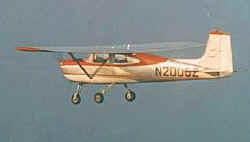 There are some excellent double, over-the-shoulder, inertial-reel shoulderharnesses available for many general aviation aircraft. Raytheon sells one of thebest for its airplanes and the Beechcraft it inherited (but it's hideously expensive and requires a fieldapproval - Ed.). Piper and Cessna sell a single, over-the-shoulder, inertial-reelharness for most singles and twins; check the Parts Catalogue, it should belisted. You can buy an adjustable, single-shoulder harness for every seat,passenger or pilot, for virtually every Cessna single engine airplane builtafter World War II, as well as the Skymaster series. Cessna sells them at cost.There is no markup at all. The hard points are already in most all of thoseairplanes for every single seat. (They were put in at the factory because theshoulder harnesses themselves were always an option, but back in the bad olddays, nobody ever bought them.) Installation is incredibly easy. When I owned aCardinal I had the rear seat shoulder harnesses installed (it already had thefront seat inertial-reels). Installation took 15 minutes. It's cheap insurance.
There are some excellent double, over-the-shoulder, inertial-reel shoulderharnesses available for many general aviation aircraft. Raytheon sells one of thebest for its airplanes and the Beechcraft it inherited (but it's hideously expensive and requires a fieldapproval - Ed.). Piper and Cessna sell a single, over-the-shoulder, inertial-reelharness for most singles and twins; check the Parts Catalogue, it should belisted. You can buy an adjustable, single-shoulder harness for every seat,passenger or pilot, for virtually every Cessna single engine airplane builtafter World War II, as well as the Skymaster series. Cessna sells them at cost.There is no markup at all. The hard points are already in most all of thoseairplanes for every single seat. (They were put in at the factory because theshoulder harnesses themselves were always an option, but back in the bad olddays, nobody ever bought them.) Installation is incredibly easy. When I owned aCardinal I had the rear seat shoulder harnesses installed (it already had thefront seat inertial-reels). Installation took 15 minutes. It's cheap insurance.
I'll emphasize this: If you own a single-engine Cessna aircraft made afterWorld War II or a Skymaster, there is no excuse for you to not have shoulderharnesses in every seat in that airplane. Even the most tight-fisted aircraftowner can afford them. Buy the kits and put them in. It may save the lives ofyour family.
Wear The Restraint System
I am still stunned by the number of pilots who do not wear the shoulderharnesses that are already installed in their airplanes. One of the commonexcuses I hear during flight reviews is that the fixed ones prevent the pilotfrom reaching all of the controls and therefore the pilot doesn't have to wearhis harness. While the FARs may say that, in a U.S. certificated aircraft theexcuse is not true. For the manufacturer to certify the aircraft it had to showthat the shoulder harness was designed so that pilots of short, medium and tallstature could still reach the controls while wearing the shoulder harnessadjusted such that a fist could be inserted between the chest and the shoulderbelt. If other pilots can reach the controls, you can, too. Having worked for amanufacturer and observed how the certification is done, I simply don't buy anyexcuse for not wearing available restraint equipment. Besides, most of the timewhen things go sour you don't have time to put on the shoulder harness beforeimpact (plus, you probably won't even think of it.)
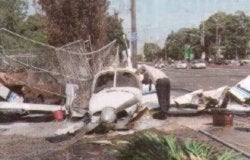 One of the fundamental rules of surviving a crash is to keep the occupantsfrom hitting something in the aircraft itself during the impact sequence. Seatbelts do the first part of that job by keeping the occupant's hips in or closeto the seat. The problem is that the person then jackknifes over the seatbeltand the head smacks something more resistant to impact than flesh and bone. Theshoulder harness is designed to keep the upper torso restrained so you don'tflail forward so far. Sure, we can argue all day long about the quality of thesystems in general aviation airplanes, but the bottom line is that they havesaved one heck of a lot of lives, and they can't help you if you don't wearthem.
One of the fundamental rules of surviving a crash is to keep the occupantsfrom hitting something in the aircraft itself during the impact sequence. Seatbelts do the first part of that job by keeping the occupant's hips in or closeto the seat. The problem is that the person then jackknifes over the seatbeltand the head smacks something more resistant to impact than flesh and bone. Theshoulder harness is designed to keep the upper torso restrained so you don'tflail forward so far. Sure, we can argue all day long about the quality of thesystems in general aviation airplanes, but the bottom line is that they havesaved one heck of a lot of lives, and they can't help you if you don't wearthem.
There is continuing dispute as to what aircraft restraint systems willwithstand. I'm not going to jump into the discussion, but I do recognize thecertification requirements have changed. New aircraft seats will now absorbloads and more sophisticated upper body restraints are standard equipment. Ifsomeone is looking for a good reason to buy a new airplane over an old one, thecrashworthiness improvements is one of the best I've heard. Older airplanes werepretty darn good, particularly if they have shoulder harnesses, but the new onesare better. Face it, we've learned a lot in the last 50 years. It's reflected inthe new production airplanes.
Select The Surface
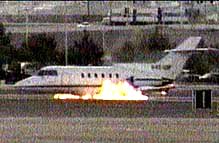 If you have any choice about where you are going to put the airplane, do alittle thinking about the surface on which you are going to land. To the extentpossible, pick the surface that will allow you to spread the process of comingto a stop over the longest distance. The difference between a landing and acrash is simply the distance over which the airplane can decelerate. Slowingfrom 60 knots to zero in 1,000 feet is no big deal; we do it every time we fly.Our bodies suffer no ill effects. Slowing from 60 knots to zero in one foot is avery big deal, indeed. I'm not convinced anyone, no matter how well restrained,could survive that stop. The longer the time and distance we have to spread outthe stop, the better off we are. We'll talk about what the human body canwithstand a little later.
If you have any choice about where you are going to put the airplane, do alittle thinking about the surface on which you are going to land. To the extentpossible, pick the surface that will allow you to spread the process of comingto a stop over the longest distance. The difference between a landing and acrash is simply the distance over which the airplane can decelerate. Slowingfrom 60 knots to zero in 1,000 feet is no big deal; we do it every time we fly.Our bodies suffer no ill effects. Slowing from 60 knots to zero in one foot is avery big deal, indeed. I'm not convinced anyone, no matter how well restrained,could survive that stop. The longer the time and distance we have to spread outthe stop, the better off we are. We'll talk about what the human body canwithstand a little later.
There are some very interesting films made by NASA when it did full-scalecrash tests of general aviation airplanes. The gantry arrangement that had beenused for training Apollo astronauts for working under reduced G levels wasmodified to impact airplanes into the ground at specific angles and speeds. Theinitial tests crashed the aircraft on concrete. The data obtained showed thatsome impressively high-speed impacts were potentially survivable. At flatterangles the airplane would hit and then slide along the concrete. For a whilethough, everyone missed the obvious: The concrete simply redirected much of theenergy of the crash. While it stopped movement downward, providing a significantdeceleration in that direction, it did not absorb all of the energy of themoving airplane. The remaining energy was translated into a long slide. Anengineer visiting from one of the manufacturers politely mentioned to the NASAscientists that, in his experience, not too many airplanes crashed on concrete.The light bulb lit and dirt was brought in and layered about three feet deepatop the concrete.
The same crash tests were rerun. The results were dramatically different.None of the impacts was survivable. The dirt compacted about six inches, andthen stopped the airplanes cold. None of the impact energy was translated to thehorizontal, as had happened with the crashes on concrete; it was all absorbed.Dramatically. The nose of the airplane crumpled as it was designed to do,absorbing a lot of energy, but the overall stopping distance for those insidethe airplane was on the order of three feet. The resulting G loads were just toohigh for the body to tolerate.
The lesson for us as pilots is to choose a place that has the maximum amountof room to slide/decelerate after touchdown. Going with the rows of a plowedfield is probably a good idea, going across them isn't. Flat ground is a lotbetter than hills. Concrete or asphalt is usually the best surface so long as itdoesn't involve hitting a wall 50 feet after you touch the ground.
Fly The Airplane All The Way Into The Crash
Yes, you've heard that line before. It means you have more control over yourdestiny than you may imagine, so don't ever give up. I freely admit I stole theline from Randy Sohn, chief check pilot for the Confederate Air Force. He tookit from Connie Edwards, who is one heck of a pilot. It means a few things:
Touch down as slowly as you can, but DO NOT STALL THE AIRPLANE BEFORE TOUCHDOWN. Far, far too many pilots, faced with what would be a routine forced landing, stall the airplane five to 10 feet in the air. That means you no longer have control of what has become a falling object. Even worse, it sets up a very high vertical component to the impact and can crush your vertebrae. It's why helicopter accidents are often so nasty; the large vertical G load means spinal column injuries.
Keep trying to control the airplane until it completely stops. If you are rolling and going to hit something, do everything you can to slow down as much as you can prior to impact. Impact energy is a square, not linear, function. You get a great deal of benefit for every knot you can slow the airplane down. That means when you blow a takeoff and run off the runway, stand on the brakes and pull the throttle to idle. I don't know how many pilots I've watched try to slow down an airplane while still carrying power. If you think of it, either pull the mixture control out or switch off the mags to get rid of any residual thrust.
Try to hit with minimal side loads. The most "crush" area for the airplane is directly in front of you and directly behind you. (It's a little tricky to hit going exactly backwards, although I did work on a case once where the airplane did just that after catching a wingtip on a tree.) The restraint system is designed to be most effective in a straight frontal impact, you have the most room to "flail" directly forward and there is a lot of airplane up there to crush and absorb energy. Take advantage of the airplane structure. Let it crush and deform to absorb the energy of impact so it is not transmitted to you. When TV reporters see the crushed remains of an airplane and make some sort of stupid comment that it's a miracle the occupant survived, it's no miracle; it's good design that allowed that structure to crumple and absorb energy, rather than transmit it to the people. If the airplane were designed to remain nice and pretty and intact after an accident it would kill the occupants in a very low-speed crash because none of the energy would be absorbed; all of it would be transmitted to the poor folks in the seats.
Wait until the airplane stops completely to undo the restraint system. Sure, that seems basic, but some folks think it's better to jump out when the airplane has "slowed down." While we used to hear of people being "thrown clear" and surviving, the reality is that you are a heck of a lot safer with an airplane around you than you are absorbing the impact with the ground all by yourself. I went off of the back of a pickup truck doing 20 mph once and the distance it took me to stop rolling and bouncing absolutely astonished me. I'd much rather have been inside the truck, firmly in a seatbelt and shoulder harness.
Gear Up or Down?
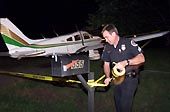 Over the years some general rules regarding whether to do an off-airportlanding with the gear up or down have evolved, but it should be made clear thatthey are not hard and fast. If you are going to land on a surface where youreasonably believe the landing gear will catch on something while you are stillgoing fast and either abruptly stop or flip the airplane, leave the gear up. Ingeneral, you want to take advantage of any part of the airplane that will absorbenergy before it gets to you, the fragile human in the seat. If you are going toland on a hard surface or on a relatively smooth field, the gear will give you alot of energy absorption for any vertical loads involved. It may also take ashock in a horizontal direction and snap off. That's good, because it justhelped slow the airplane down without transmitting all of the energy to you. Ifyou land gear up you hit on a fairly rigid structure that has only a few inchesof crush distance before the load is directed to the seats themselves. The gearis designed to withstand and absorb a lot of impact load. If the surface allowsit, having the wheels under you is usually a good idea.
Over the years some general rules regarding whether to do an off-airportlanding with the gear up or down have evolved, but it should be made clear thatthey are not hard and fast. If you are going to land on a surface where youreasonably believe the landing gear will catch on something while you are stillgoing fast and either abruptly stop or flip the airplane, leave the gear up. Ingeneral, you want to take advantage of any part of the airplane that will absorbenergy before it gets to you, the fragile human in the seat. If you are going toland on a hard surface or on a relatively smooth field, the gear will give you alot of energy absorption for any vertical loads involved. It may also take ashock in a horizontal direction and snap off. That's good, because it justhelped slow the airplane down without transmitting all of the energy to you. Ifyou land gear up you hit on a fairly rigid structure that has only a few inchesof crush distance before the load is directed to the seats themselves. The gearis designed to withstand and absorb a lot of impact load. If the surface allowsit, having the wheels under you is usually a good idea.
Which Way To The Egress?
Open the doors of the airplane prior to landing if you can do so withoutseriously degrading the aerodynamics. It may mean a big difference in howrapidly you can get out after things come to a stop.
Assume The Position
Make sure everyone has tightened the seat belts and shoulder harnesses astightly as possible and has "assumed the position" curled forward intothe belts to take out the slack prior to touchdown. Slamming against the beltsdoes reduce the impact forces a person can withstand.
If there is any sort of padding that you and your passengers can put in frontof yourselves, be it a pillow, coat, soft-sided suitcase with no hard objects init or a stuffed toy, use it. The idea is to spread the deceleration of as muchdistance and time as possible. When North American test pilot Al White ejectedfrom the triple-sonic XB-70 and the bag that around the bottom of the ejectioncapsule designed to absorb loads didn't inflate, he actually disassembled partsof his seat so that he could put the padding where it would better support himwhen he hit the ground with a very high vertical G load. He was seriouslyinjured but survived.
Switches Off
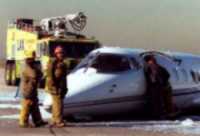 Turn off the master switch prior to touchdown. I've seen a lot of airplaneswith the top half of the fuselage completely burned out after an accident inwhich the fuel system stayed intact and there was not an fuel-fed fire. Thedeformation of the electrical system started a fire that ignited the interiorfurnishings. (They are fire-retardant materials, not fireproof.) Shutting downthe electrical system before impact can reduce the risk of an electrical firesubstantially.
Turn off the master switch prior to touchdown. I've seen a lot of airplaneswith the top half of the fuselage completely burned out after an accident inwhich the fuel system stayed intact and there was not an fuel-fed fire. Thedeformation of the electrical system started a fire that ignited the interiorfurnishings. (They are fire-retardant materials, not fireproof.) Shutting downthe electrical system before impact can reduce the risk of an electrical firesubstantially.
Turn off the fuel selector(s) prior to touchdown. A fuel-fed fire is a threatin any accident. Shutting off the fuel selector(s) and then touching down asslowly as possible (but not stalling in the process) after selecting the bestsite you can, goes a long way to reducing the risk of fire. The fuel lines inthe fuselage of general aviation airplanes are routed to take advantage of thestrongest portions of the structure, but as structure deforms to absorb energy,particularly forward of the firewall, there is the chance a fuel line will openup. Shutting off the supply of fuel to the engine area will minimize any firethat does start up front.
If you hit something with the wings, there is the chance you'll open a fueltank. Once the fuel finds a source of ignition, the resulting fire can beimpressive. Using the available restraint system may keep you conscious so youcan get out before a fire can kill you.
Blue Side Up
Keep the airplane right side up. This may sound pretty basic for those whofly singles, but it is a killer in twins. Twins are much less likely to crashafter an engine failure than singles, however, if they do, the accident is morelikely to be fatal. The reason is that too many pilots let the airplane getbelow Vmc as they feverishly try to climb or just hold altitude. That means theairplane is going to roll upside down and crash. General aviation twins can takeincredible loads when they crash right side up, but upside down the storybookusually closes immediately.
 Years ago I worked on a case involving a freight pilotwho lost an engine at about 200 feet up on takeoff. He hadn't yet raised thegear and had about 7,000 feet of runway in front of him. He retracted the gear,didn't feather the prop on the dead engine and made a turn while trying to holdaltitude. Shortly after that the airplane rolled inverted and crashed. He died.Had he simply lowered the nose he could have landed. Even if he had rolled offthe end of the runway, into the fence at 60 mph, he would have survived. A goodfriend of mine discovered he couldn't hold altitude following an engine shutdownshortly after takeoff. He kept up his speed, made a small turn and landed, gearup, in a plowed field. He slid through three fences, but once the airplanestopped, he unbuckled and got out, unhurt.
Years ago I worked on a case involving a freight pilotwho lost an engine at about 200 feet up on takeoff. He hadn't yet raised thegear and had about 7,000 feet of runway in front of him. He retracted the gear,didn't feather the prop on the dead engine and made a turn while trying to holdaltitude. Shortly after that the airplane rolled inverted and crashed. He died.Had he simply lowered the nose he could have landed. Even if he had rolled offthe end of the runway, into the fence at 60 mph, he would have survived. A goodfriend of mine discovered he couldn't hold altitude following an engine shutdownshortly after takeoff. He kept up his speed, made a small turn and landed, gearup, in a plowed field. He slid through three fences, but once the airplanestopped, he unbuckled and got out, unhurt.
Sartorial Decisions
Don't wear nylon, polyester or other synthetic clothing when you fly. If afire starts those clothes melt and stick to your skin, causing some hideousburns. Wear wool or cotton. Some pilots wear Nomex flight suits. That may buyyou an extra couple of seconds in the event of a fire.
Fuel Tanks In The Fuselage
If you fly an airplane with fuel tanks in the fuselage, particularly if thetank is between the occupants and the engine, keep in mind that those airplaneshave a horrible post-crash fire history. It does not take much of an impact toshove the hot engine back into the fuel tank and open it up. Yes, I fly thoseairplanes, but I generally do not fly them where I do not have a good spot for aforced landing and I am resolved never to stall one into the ground after anengine failure.
Every time I write about this subject I have Cub, Champ and Ercoupe pilotsrush to defend their mounts as wonderful airplanes that have stood the test oftime. I agree they are wonderful airplanes and I love to fly them. However, thetest of time has shown they burn like blowtorches after even fairly minorcrashes. They are the airplanes most likely to burn on impact. It's anunfortunate fact of life that pilots of these types must keep in mind.
The Gear Won't Extend, Now What?
During the course of the discussion we were having one of the regulars saidthat if he ever had to land gear up, he'd do it on a grass runway. He said hefigured the grass was softer than concrete so it would be better for a gear uplanding.
It sounded logical.
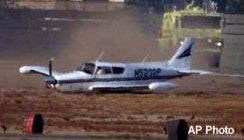 Tom Tann pointed out that one of the biggest challenges with crashworthinessresearch was that so many times the idea that sounded logical simply wasn'tborne out in crash testing. The experience that has been gained with gear-uplandings has also shown that what might seem logical is not how things turn outworking in the real world. At some point during World War II the U.S. Navy'sflight training operation at Pensacola started insisting that aircraft coming inwith landing gear malfunctions land on hard-surface, rather than grass, runways.The results proved to be better in terms of damage to the aircraft and injuriesto pilots.
Tom Tann pointed out that one of the biggest challenges with crashworthinessresearch was that so many times the idea that sounded logical simply wasn'tborne out in crash testing. The experience that has been gained with gear-uplandings has also shown that what might seem logical is not how things turn outworking in the real world. At some point during World War II the U.S. Navy'sflight training operation at Pensacola started insisting that aircraft coming inwith landing gear malfunctions land on hard-surface, rather than grass, runways.The results proved to be better in terms of damage to the aircraft and injuriesto pilots.
A by-product of the NASA crash tests was to demonstrate that the riskof injury to aircraft occupants was less if a landing involving a landing gearmalfunction were made on hard-surfaced runways. The reason is that if you messup your landing on grass, and have a significant vertical descent factor in thetouchdown, the turf may just stop you very rapidly. Grass may also ball up andcause the airplane to flip over. I was thinking about that recently when Ilooked at a film of a pilot landing his Cessna 210 after the gear could not beextended. He stalled the airplane about five feet in the air and really hithard. In fact, he was high enough and deep enough into the stall that the nosestarted to pitch down before the airplane hit the runway. He was on a concreterunway. No one was hurt.
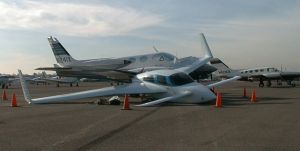 To put folks' minds at ease, there has been some research done on gear-uplandings and injuries. Thus far a search of NTSB records has failed to turn up asingle gear up landing in a civilian airplane (airlines and general aviation)since World War II where someone was hurt or killed. (I recognize that a gear-uplanding does not ordinarily fit the definition of a reportable accident for theNTSB; however, many of them do get reported.) The only injuries located thus farinvolved passengers on airliners subsequently hurt going down the evacuationslides. It appears that while gear-up landings make quite the media event, theTV reporters road raging through traffic on their way out to the airport to getthe "visual" are in much more danger than the people in the airplaneinvolved. If you have hard data on a civilian gear-up accident in which someonewas hurt or killed, please let me know. Part of the research was done to counterthe FAA's claims of danger to passengers when they try to suspend thecertificates of pilots who make an inadvertent gear-up landing.
To put folks' minds at ease, there has been some research done on gear-uplandings and injuries. Thus far a search of NTSB records has failed to turn up asingle gear up landing in a civilian airplane (airlines and general aviation)since World War II where someone was hurt or killed. (I recognize that a gear-uplanding does not ordinarily fit the definition of a reportable accident for theNTSB; however, many of them do get reported.) The only injuries located thus farinvolved passengers on airliners subsequently hurt going down the evacuationslides. It appears that while gear-up landings make quite the media event, theTV reporters road raging through traffic on their way out to the airport to getthe "visual" are in much more danger than the people in the airplaneinvolved. If you have hard data on a civilian gear-up accident in which someonewas hurt or killed, please let me know. Part of the research was done to counterthe FAA's claims of danger to passengers when they try to suspend thecertificates of pilots who make an inadvertent gear-up landing.
A number of pilots I've spoken to express a concern for fire in a gear-uplanding. After all, in the movies don't the airplanes always blow up when theymake gear-up landings? Real life isn't that way. The fuel lines on airplanes areabove the level of the belly skin of the airplane by some distance. The linesare also protected by some of the strongest portions of the fuselage structure.A gear-up landing may hurt the skin and lower fuselage structure a bit, but atleast on concrete, the damage does not go up to where the fuel lines live.Interestingly enough, if you look at the belly of some jets you'll see somefairly robust strips that look a little like runners. Those are there just forgear-up landings, to help protect against damage in the area of fuel lines andtanks.
The fire concern is another reason one should not land gear up on grass. Ifthe soil does cause the airplane to swerve abruptly in the slide out, there isthe chance the machine will run off the runway and hit something that couldpenetrate a fuel tank or line.
Partial Gear Extension
Of course, the next question that came up among the pilots was what to do inthe situation where only one or two of the landing gear legs will extend or thewhole thing will only partially extend. Should the landing be made on thoseextended gear or should the gear be left up?
The answer is, by and large, when landing on a hard surfaced runway putanything you can under the airplane that will serve to absorb energy before theimpact load gets to the occupants. Airplanes do slide on partially extendedgear, sometimes on the sides or the tires and the gear doors. Airplanes doamazingly well on a nose gear, main gear and wing tip. Directional controlusually isn't a serious problem. The operant rule is to do as much as possibleto absorb loads. Centurions, Cardinals and other retractable single-engineCessnas have made safe landings when the gear was stuck in the "trail"position, hanging down below the fuselage. It looks a little precarious, butthings seem to turn out just fine.
If landing with partially disabled gear on grass or off-airport, the concernis with the gear catching on something, or hitting a hole or a ditch andflipping the airplane, something that could result in a very quick stop fromabout 50 knots, a most unpleasant experience. In those situations it is probablybetter to land with the gear retracted. Keep the descent rate low so as to haveas much energy in a horizontal rather than a vertical direction. Again, thatmeans a low speed, but not stalled, touchdown.
What Kind of "G" Loads Can Humans Withstand?
So, what is there to protect us if we do have to hit something that isn'tsoft and cheap? What can the human body withstand?
There has been research going on into the ability of the human body towithstand loads for well over 50 years. The first studies on human beings wereapparently done by the Nazis as part of the "medical exam" atrocitiesperpetrated on the concentration camp inmates. Those "tests" wereactually an evil combination of torture with a tiny bit of pseudo researchtossed in to try to justify what was being done. The results were published butthe data are considered unreliable and unusable from both ethical and scientificstandards. I've known about these tests for about 20 years now, and I stillshudder when I think of them.
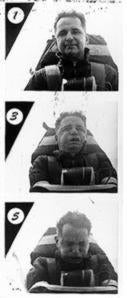 Following World War II, various organizations in a number of countries beganfull-scale abrupt deceleration tests on human volunteers. The best known of thesein the U.S. were simply referred to as the Stapp tests. In 1954, Lt. Col. JohnPaul Stapp and some other volunteers went through a series of tests riding anopen rocket sled that shot down a rail before being stopped by a series of waterbrakes. Col. Stapp was the person who kept volunteering after others droppedout. He had some rides in which he was subjected to 20 Gs for a full second. Onone ride the sled reached 632 mph and stopped in one and a half seconds. It wasreported that he had experienced about 40 Gs for a brief period of time and,even though he was blind afterwards for a matter of hours, it was widelybelieved the human body could withstand 40 Gs.
Following World War II, various organizations in a number of countries beganfull-scale abrupt deceleration tests on human volunteers. The best known of thesein the U.S. were simply referred to as the Stapp tests. In 1954, Lt. Col. JohnPaul Stapp and some other volunteers went through a series of tests riding anopen rocket sled that shot down a rail before being stopped by a series of waterbrakes. Col. Stapp was the person who kept volunteering after others droppedout. He had some rides in which he was subjected to 20 Gs for a full second. Onone ride the sled reached 632 mph and stopped in one and a half seconds. It wasreported that he had experienced about 40 Gs for a brief period of time and,even though he was blind afterwards for a matter of hours, it was widelybelieved the human body could withstand 40 Gs.
Unfortunately, subsequent tests by other organizations were unable toreproduce the data. It was finally realized that after the rockets on the sledburned out, and before it entered the braking area, the air drag subjected thesled to significant deceleration, causing Col. Stapp to move forward into therestraining belts (they were very involved, far more so than anything found onany aircraft or automobile today) and "preload" the belts. Thus, whenthe serious deceleration occurred, he was not snapped forward any distancebecause the slack in the belts was already taken out. Accordingly, he couldwithstand, without serious injury, much more than someone who experiences rapiddeceleration without warning and is flung into the belts. The rule of thumb nowis that a healthy adult male can probably survive 20 Gs for a second, and maybesomething more for a shorter time. A healthy woman can probably handle a littlemore as women tend to be able to withstand higher G loads than men.
A Little Planning Can Make a Big Difference
While crash survival can be a depressing subject, a little thought ahead oftime can pay dividends should the real thing come to pass. The airplanes we flydo a pretty remarkable job in crashes when one considers they routinely seehigher speeds at impact than do cars. What is a "low speed" crash inan airplane is going like crazy in a car. If you make use of the protectionsystems built into the airplane and fly the airplane all the way into the crashyou have a pretty good chance of surviving the event.
By the way, one of the things I particularly enjoy about writing this columnis that I learn a great deal from readers who have knowledge in these areas. I'mcertain I haven't hit on everything that a person can do to protect theoccupants (I didn't even mention helmets, which is a whole can of worms initself) so I'm looking forward to comments and suggestions from readers on thissubject.
See you next month.

